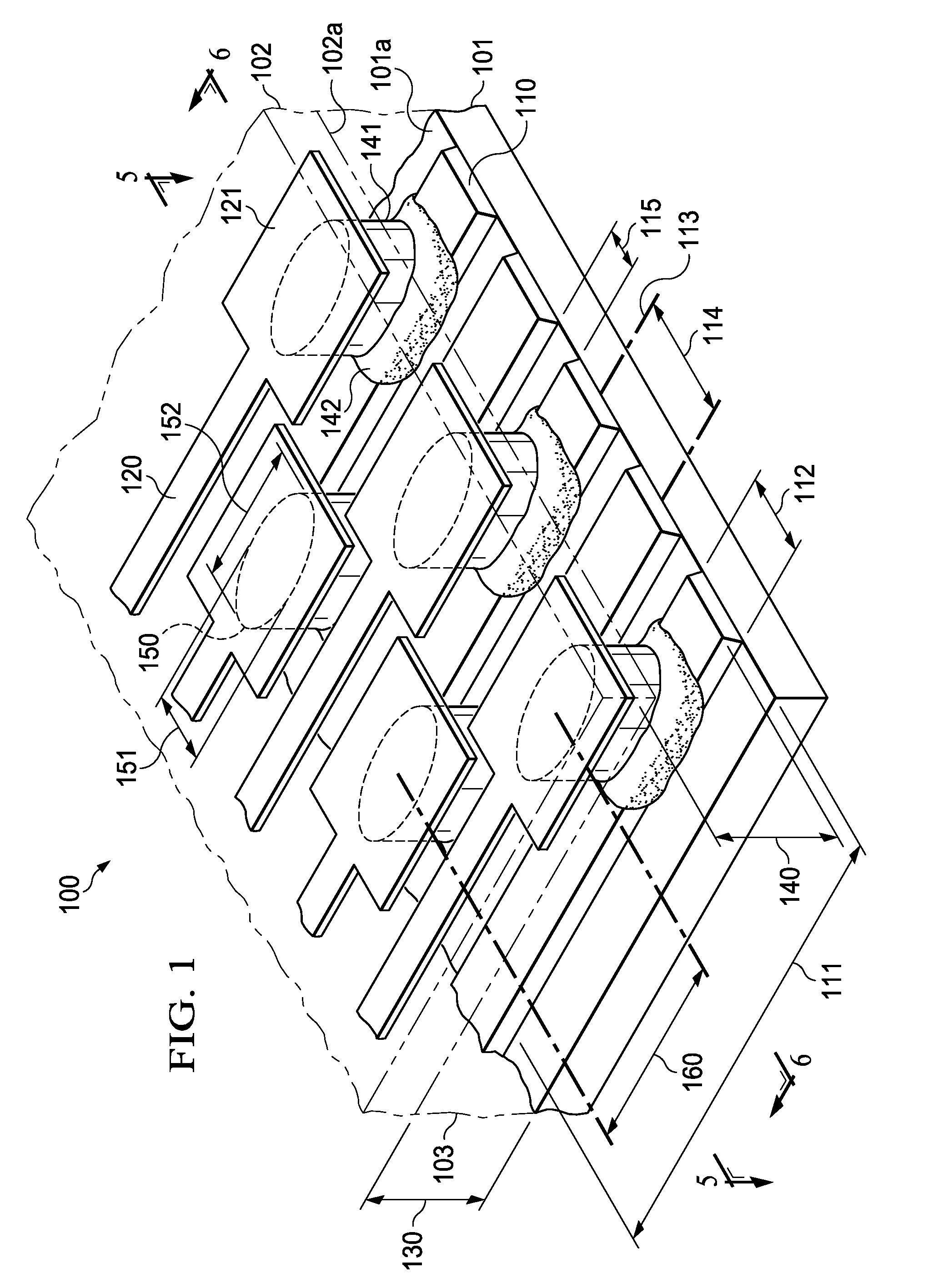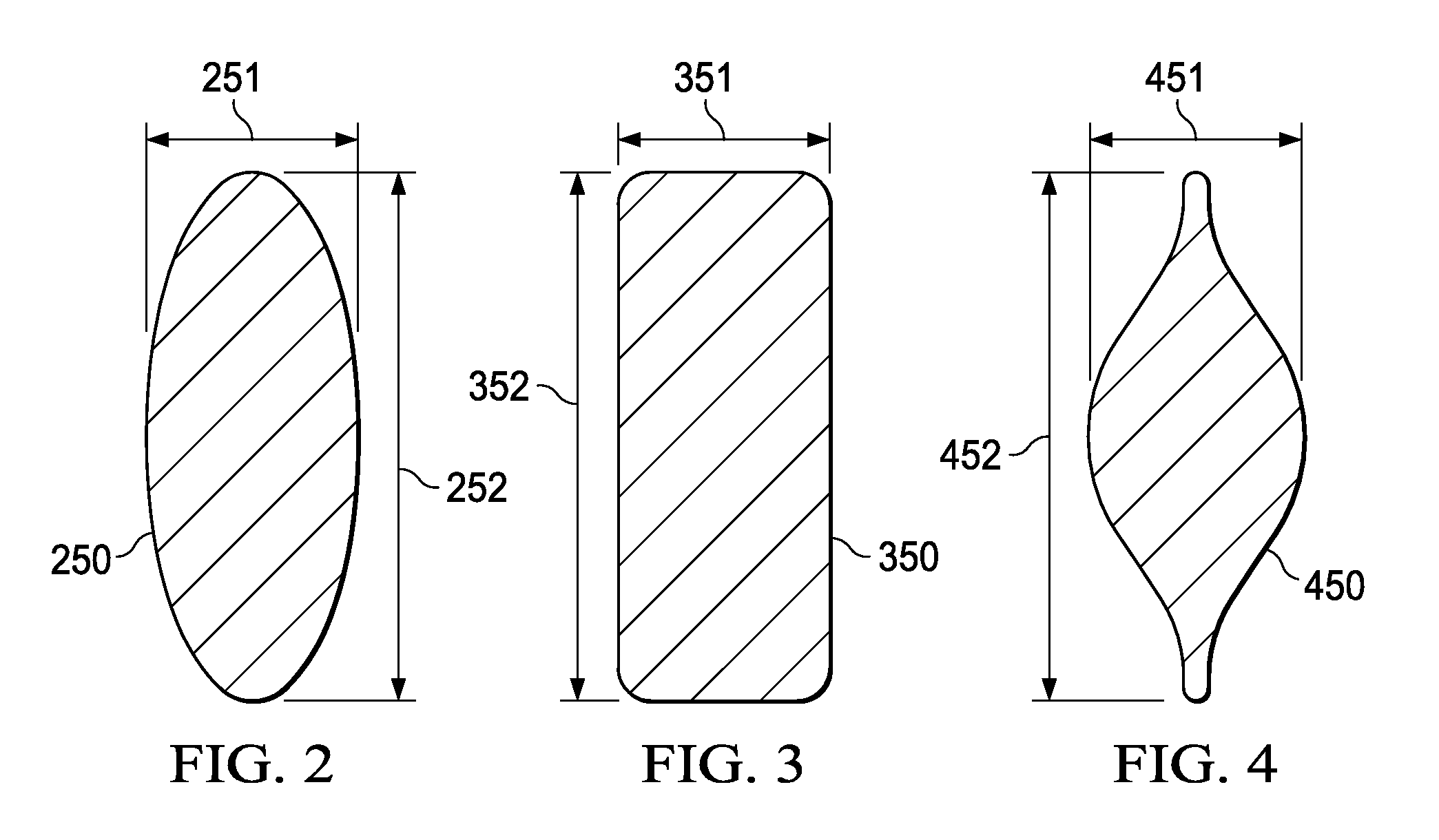Semiconductor Flip-Chip System Having Oblong Connectors and Reduced Trace Pitches
a technology of oblong connectors and flip-chips, which is applied in the direction of semiconductor devices, semiconductor/solid-state device details, electrical equipment, etc., can solve the problem of shortening the fine-pitch adjacent trace, and achieve the effect of enhancing the robustness of the solder joint, minimizing the risk of shortening the adjacent trace, and reducing the pitch of the connector
- Summary
- Abstract
- Description
- Claims
- Application Information
AI Technical Summary
Benefits of technology
Problems solved by technology
Method used
Image
Examples
Embodiment Construction
[0017]FIG. 1 illustrates an exemplary embodiment of the invention, generally designated 100, which includes a semiconductor chip 102 assembled by flip-chip methodology on an insulating substrate 101. The substrate has a first surface 101a and a plurality of conductive traces 110. These traces may be placed on the substrate surface, as shown in FIG. 1, or may be level with the substrate surface. As FIG. 1 indicates, traces 110 have a first length 111, which is sufficient to accommodate the attachment of the connections to the chip 102; in FIG. 1, the attachments are positioned in a staggered arrangement relative to each other. For the extent of first length 111, the traces 110 are straight and parallel to each other. Traces 110 have a first width 112, which is uniform along first length 111. For the straight length, each trace 110 has a centerline 113. The distance between two adjacent trace centerlines determines the trace pitch 114. For the plurality of traces 110 shown in FIG. 1, ...
PUM
 Login to View More
Login to View More Abstract
Description
Claims
Application Information
 Login to View More
Login to View More - R&D
- Intellectual Property
- Life Sciences
- Materials
- Tech Scout
- Unparalleled Data Quality
- Higher Quality Content
- 60% Fewer Hallucinations
Browse by: Latest US Patents, China's latest patents, Technical Efficacy Thesaurus, Application Domain, Technology Topic, Popular Technical Reports.
© 2025 PatSnap. All rights reserved.Legal|Privacy policy|Modern Slavery Act Transparency Statement|Sitemap|About US| Contact US: help@patsnap.com



